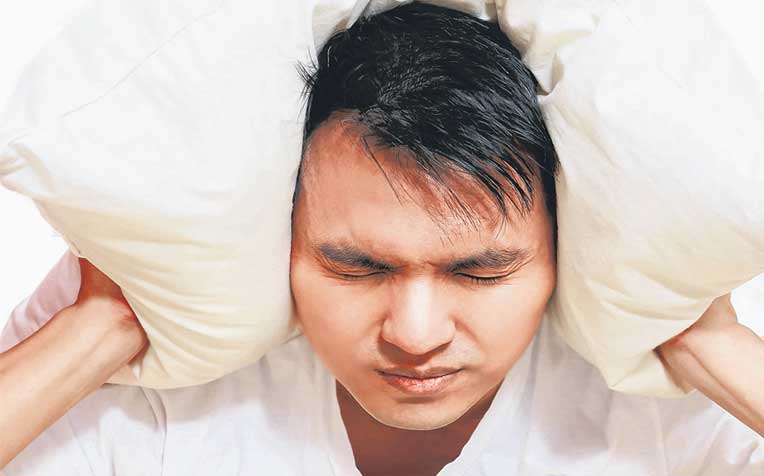
can diagnose sleep disorders such as insomnia, narcolepsy and obstructive sleep apnoea.
The polysomnogram is a sleep test usually done overnight in hospital to diagnose sleep disorders.
But for people who cannot sleep in a strange environment with wires stuck to them, sleep studies can also be done at home, with portable tests like the WatchPAT. Though convenient, home sleep tests have their limitations.
The Singapore General Hospital (SGH) has the biggest multidisciplinary sleep unit here, with six polysomnogram rooms.
“We use the in-laboratory polysomnogram for patients who want the study done in hospital and the WatchPAT home sleep study for those who cannot or do not want to come here,” said Dr Toh Song Tar, director of the Sleep Disorders Unit, and a senior consultant at SGH’s Departmentof Otolaryngology.
Obstructive sleep apnoea (OSA) is one of the most prevalent sleep disorders here. One in three Singaporeans suffers from moderate to severe OSA, according to a study released in March, and the condition is often under-diagnosed.
In OSA, the patient stops breathing repeatedly as he sleeps. Signs include loud snoring, severe daytime fatigue and headaches.
Last year, about 1,200 patients did the overnight sleep test at SGH and, this year, more than 700 patients have done the test.
About 90 patients did the Watch- PAT test last year and close to 70 patients were on the test in the first seven months of this year.
Here is a look at the two tests:
POLYSOMNOGRAPHY
WHAT IT IS: This is a comprehensive test done in a sleep laboratory. Staff will monitor a patient’s sleep throughout the night.
THE GOOD: This full in-laboratory polysomnogram gives detailed data onthe various parameters of sleep.
This includes the pattern of brain waves, which helps determine the stages of sleep; heart rhythm and rate; muscle tone and movement; and excessive limb movements.
“It is able to diagnose the majority of sleep disorders,” said Dr Toh.
Such disorders include narcolepsy and insomnia.
THE BAD: Patient feedback showed that they found it very uncomfortable, as they had so many monitoring equipment and instruments onthem, said Dr Toh.
Patients have to go to sleep with at least 20 sensors stuck to their body to record their brain waves, eye and leg movements, blood oxygen levels, heart rate and breathing.
Some felt that the sleep they had was not quite the same as at home, as the in-laboratory polysomnogram is done in a foreign environment, said Dr Toh.
“They may not be used to the sound of the air-conditioner or the temperature of the room, or the general ambience of the place.”
Dr Kenny Pang, an ear, nose and throat surgeon at Asia Sleep Centre in Paragon, said: “This test is less physiological. It may underestimate the sleep apnoea problem if the patients don’t sleep well and aren’t relaxed.”
WATCHPAT
WHAT IT IS: This is the main home sleep test used in Singapore, said Dr Pang. It is convenient as patients do the test in the comfort of their own homes.
With the latest model that came out in May, most patients just need to wear the device on their wrist and put ona finger probe, he said.
The single finger probe measures blood oxygen levels, the peripheral arterial tone in the finger – a rise would indicate that the person cannot breathe – and the muscle tone in the finger, which can be used to determine if the person is sleeping.
THE GOOD: Studies have shown that it is almost as accurate as the overnight sleep test in diagnosing OSA,Dr Pang said.
He uses this test for patients suspected of having OSA as it is known to produce more accurate results than a polysomnography.
“This is because the patient does not need to sleep in the hospital, on a different pillow and different bed, and with cumbersome wires attached to his body,” he said.
This is also why the test costs less than a polysomnography, where the patient is monitored by a lab technician through the night.
Dr Pang said the WatchPAT would cost $480 per night while the in-hospital sleep test could cost triple that amount.
Dr Toh said the WatchPAT is simple to use and is scientifically validated. “Patients generally find it comfortable and are able to sleep more naturally.”
THE BAD: It can be used only to determine if a patient has OSA and other sleep-related breathing disorders and cannot be used to diagnose sleep disorders that do not affect the breathing, said Dr Toh.
Such disorders, like periodic limb movement disorder, can be picked up by the polysomnogram.
Also, the WatchPAT may not pick up subtle breathing irregularities, so patients with mild OSA may not be diagnosed accurately.
“Patients who did not get a diagnosis on WatchPAT but are suspected of having OSA may need to undergo the full in-laboratory study,” said Dr Toh.
Contributed by














 Get it on Google Play
Get it on Google Play